Belarus anti-Lukashenka media falls into confirmation bias traps
NEXTA Live and TUT.by shared unverified
Belarus anti-Lukashenka media falls into confirmation bias traps
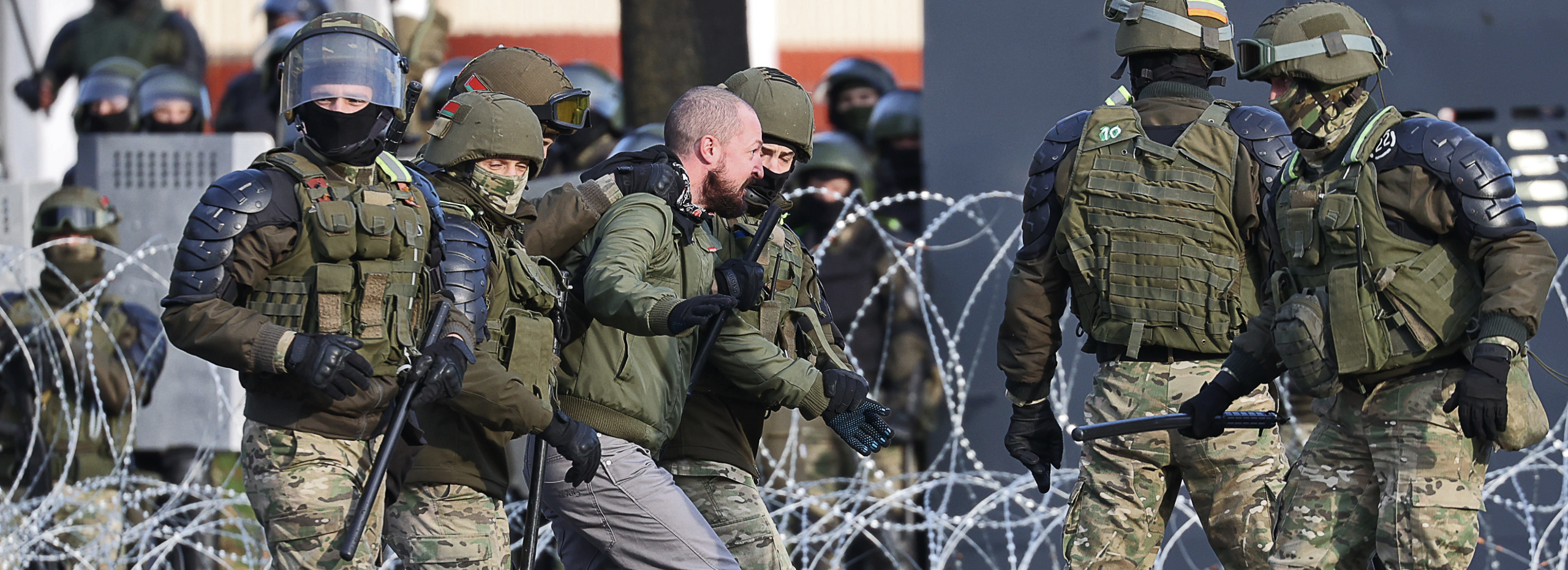
NEXTA Live and TUT.by shared unverified information, including a video apparently recorded to undermine their credibility
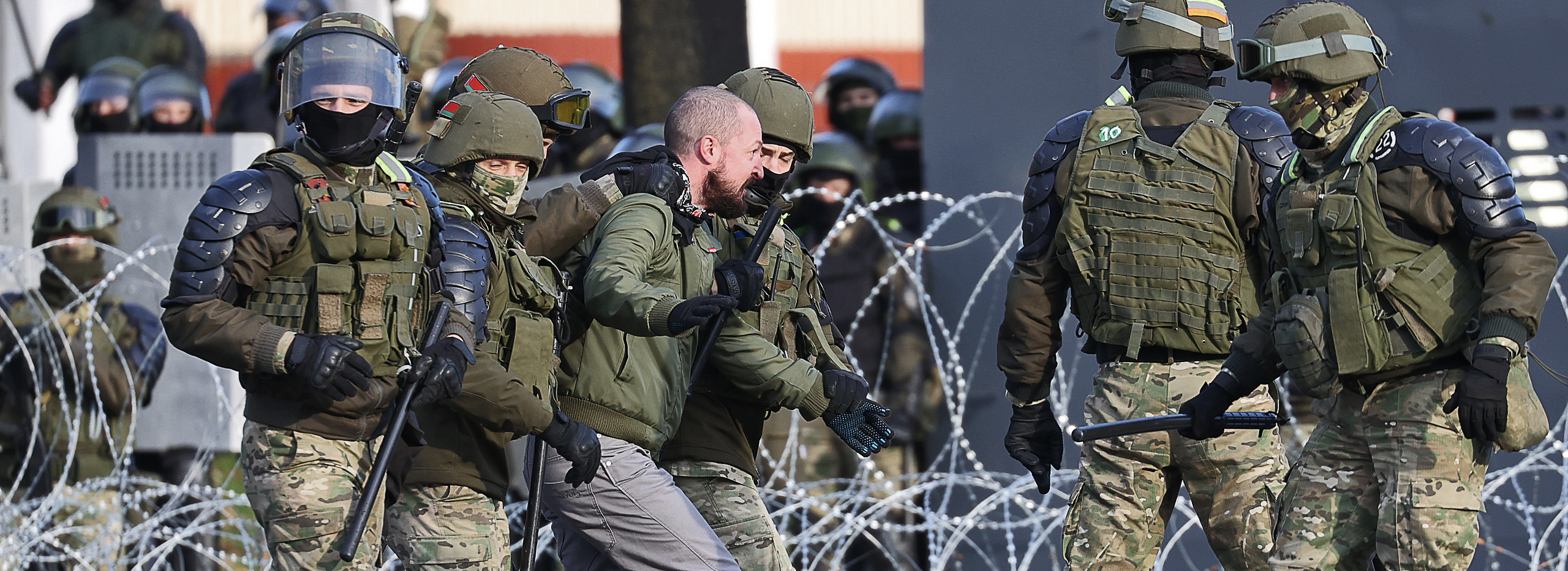
Belarusian independent media outlet TUT.by and popular anti-Lukashenka Telegram channel NEXTA Live have occasionally spread misinformation that appeared credible at face value but turned out to be inaccurate. Such instances send a worrying signal that independent newsrooms in Belarus are sometimes sacrificing journalistic precision for speed, and are sharing important updates from the ground without additional verification. As a result, it has the potential to undermine trust in independent media and create a further split in the Belarusian information space in which neither side is providing true and verified information.
Independent journalists in Belarus suffer from ongoing detentions and prosecutions when covering anti-Lukashenka protests. It puts additional pressure on newsroom operations, as newsrooms need to deal not only with fewer staff, but also a large information flow submitted from Telegram users. Telegram has become the central platform for information-sharing amid the internet shutdown initiated by the government on the morning of the presidential elections on August 9, 2020. According to the final election results, Lukashenka received 80.1 percent of the vote to Sviatlana Tsikhanouskaya’s 10.1 percent. The lopsided vote count, public distrust in their veracity, and allegations of electoral fraud led to the ongoing protests around the country.
Sharing unverified statements
On August 28, the popular anti-Lukashenka Telegram channel NEXTA Live posted an announcement that Viktor Snyezhcky of the Grodno State University of Medicine was fired allegedly because he publicly condemned “outrageous acts by law enforcement officers” and supported protesters.

Less than one hour later, NEXTA corrected the announcement and apologized for spreading unconfirmed information. The information turned out to be false, because Snyezhcky himself denied the fact of being fired when a local news media outlet Hrodna Life reached out to him.
While NEXTA published a correction promptly, the pro-Lukashenka Telegram channel Grodnynskie Slivy — novosti Grodno used the opportunity to dismiss NEXTA as feykomet, meaning a “fake-producer” in Russian. Three other pro-Lukashenka channels amplified the post.
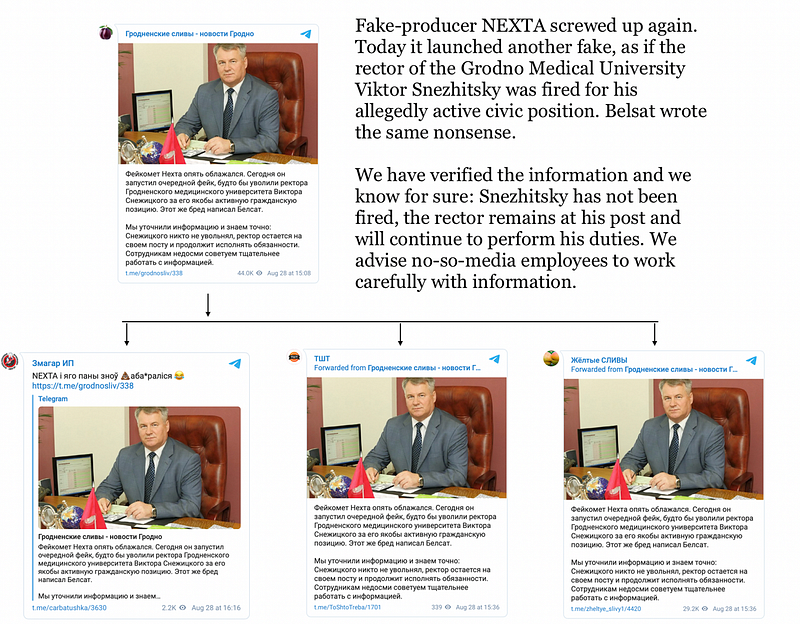
Mismatching people
On September 10, the Twitter account of Dmitry Navosha, the founder of Russian media outlet Sports.ru, posted that Aleksey Kulakov, a member of pro-Kremlin movement SERB who in 2017 also participated in an attack on Aleksey Navalny, was spotted at a rally in support of Lukashenka in Minsk. Navosha had recently become a fierce Lukashenka critic in Russia and started a fund to support Belarussians fired due to their political views. Navosha’s reputation in Belarus possibly led to NEXTA Live channel picking up his story and amplifying it. Minutes later, Navosha’s allegation regarding Kulakov was shared by Rustem Adagmatov, a popular independent Russian blogger.
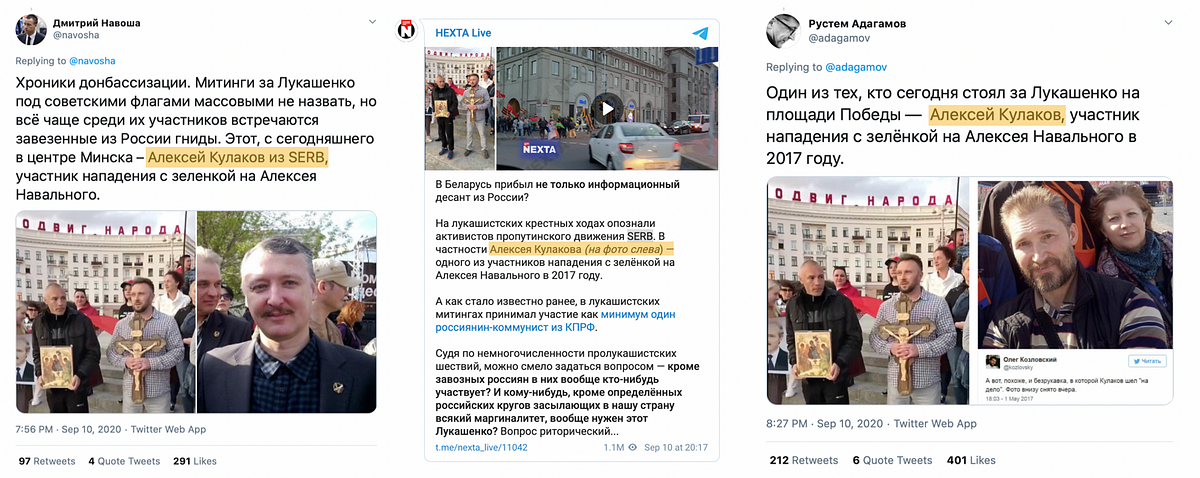
In their posts, Navosha and NEXTA Live identified a bald man holding a religious icon at a pro-Lukashenka march and compared him with an image of Kulakov posted on Kulakov’s VKontakte account in 2016. Adagamov used Kulakov’s image retrieved from а tweet in which a Twitter user recognized Kulakov as the person who filmed an attack on Navalny in 2017. Adagmatov’s image of Kulakov also showed a bearded man with short hair that looks similar to a man at the pro-Lukashenka rally standing on the right.
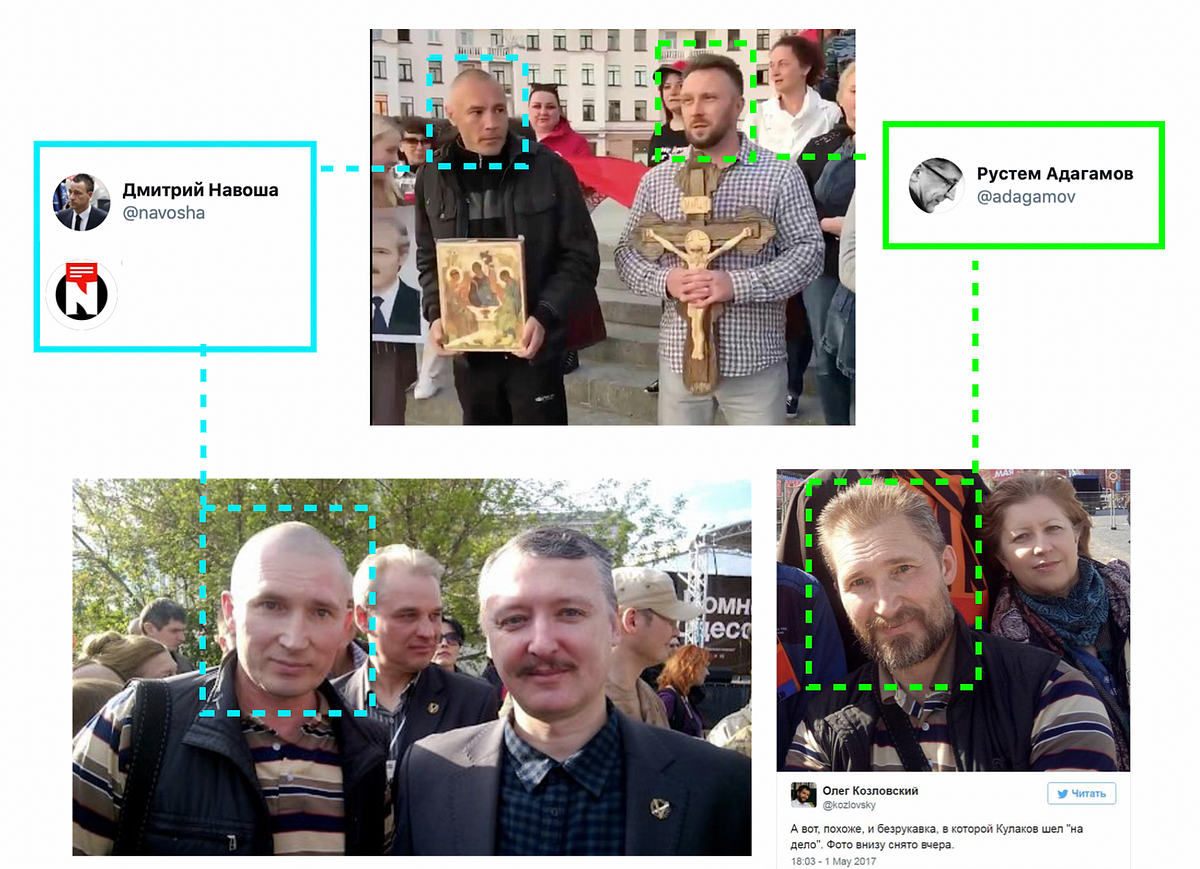
Open source evidence suggests that both identifications were inaccurate. The bearded man turned out to be Sergey Kovrigin, an IT specialist from Belarus who started organizing rallies in support of Lukashenka out of his own initiative, according to his remarks in a video on the pro-Lukashenka YouTube channel Let’s Save Peaceful Belarus.
The DFRLab could not identify the name of the bald man but it is highly unlikely that the person is Kulakov. On September 10, 2020, the same day the photo allegedly of him was taken, Kulakov posted a photo of himself on Instagram at a roundtable discussion in Moscow that day.
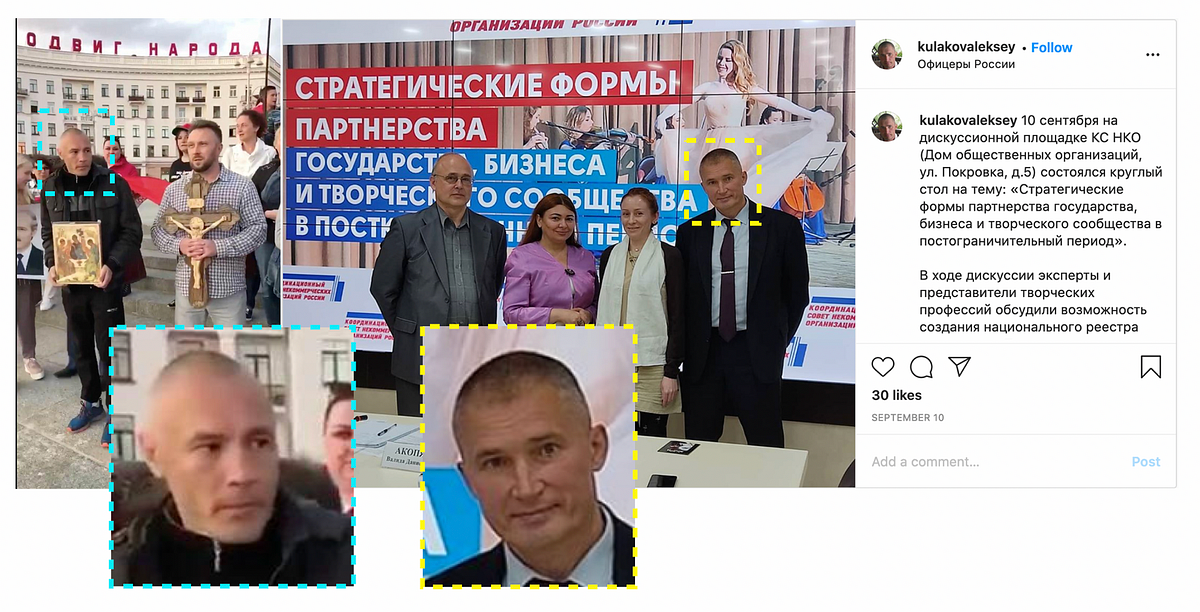
Earlier, social media users recognized Anton Tarasov, the former member of Russian Communist party KPRF, giving an interview to Belarus state television at a similar pro-Lukashenka rally presented as a regular Belarusian. Tarasov later told pro-Kremlin outlet Gazeta.ru that he went to Belarus voluntarily and explained to journalists who filmed him that he was from Russia, but this detail was not presented on the video story. After NEXTA Live accused Tarasov of participating at a staged rally, he started to receive threats on Instagram and VKontakte, as links to Tarasov’s accounts were included in the NEXTA’s post.
Both cases provided more reasons for pro-Lukashenka Telegram channels to accuse NEXTA Live of spreading false news.
Falling for information dirty tricks
On October 11, the day of disproportionate police violence after Lukashenka’s meeting with political prisoners to discuss Belarus constitution reforms, independent Belarusian media outlet TUT.by posted a video on its Telegram channel showing police detaining a cyclist next to a cinema in Minsk. Two days later, the pro-Lukashenka Telegram channel TShT published another video from the same incident showing the cyclist skidding off his bike, with the police helping him get off the ground.
The DFRLab compared the footage and concluded that both videos showed the same event but from different angles. Note the people passing-by– an older man with his hand raised as if pointing to the cyclist with police officers (blue boxes) and a younger man in light trousers behind him (green box). Both angles match the location of the square in front of the cinema.
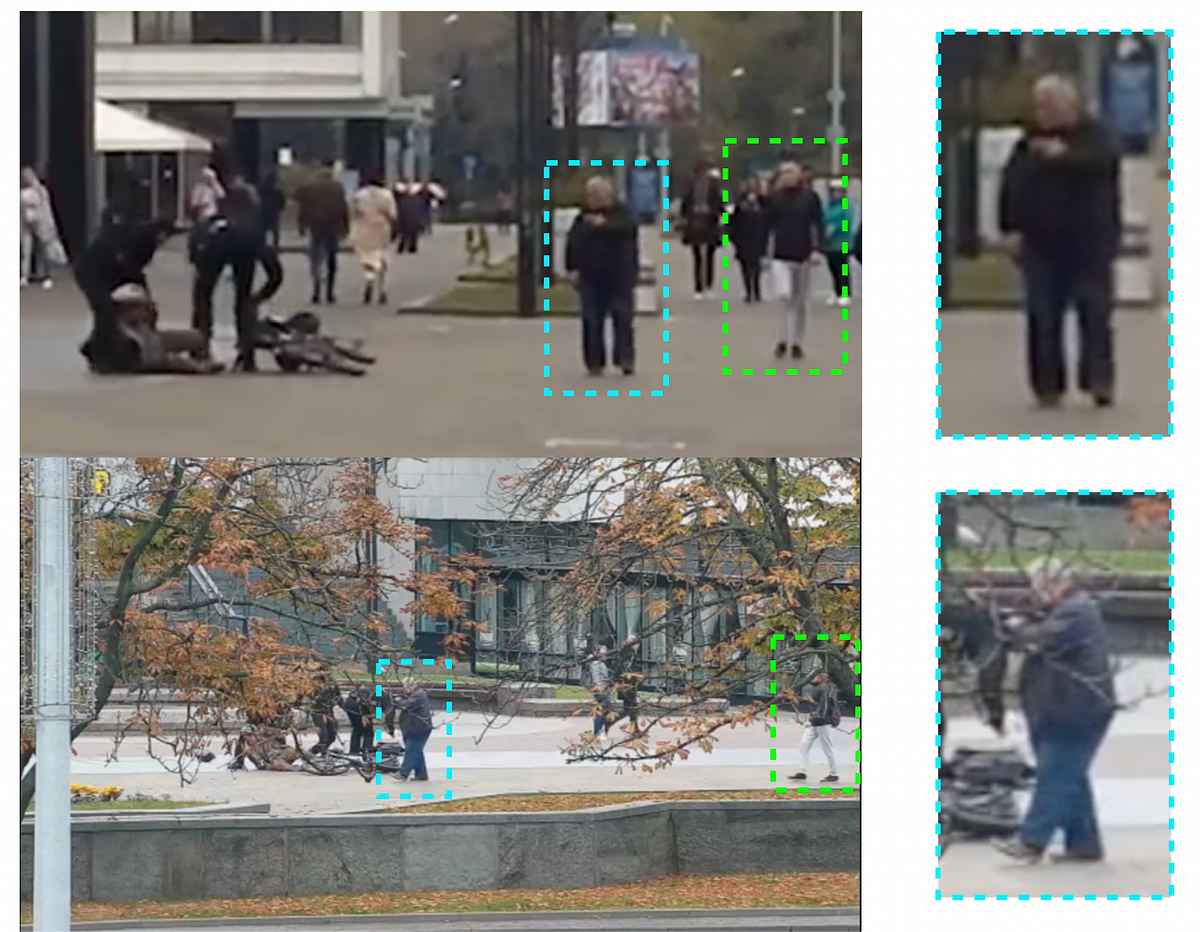
The video amplified by the pro-Lukashenka channel, however, seems to have been staged. Inexplicably, it films the cyclist for an extended period for no apparent reason, with the cyclist skidding off his bike in a way that appears intentional.
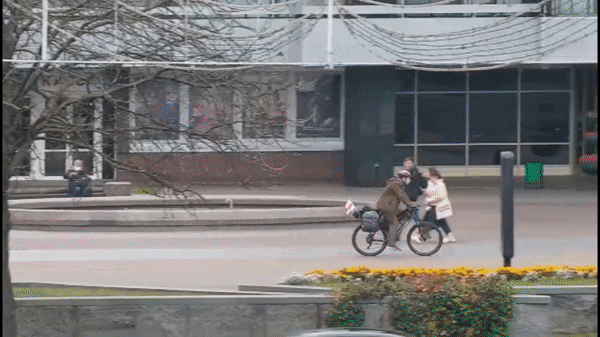
The video showing the cyclist’s fall was filmed from across the street, and the person recording it started to follow the cyclist nearly eight seconds prior to him skidding to the ground.
If the event was indeed staged, it raises the serious possibility that the first video showing only the moment of detention was leaked to TUT.by in the hope that they would publish it, so the second video could be released to embarrass TUT.by and accuse them of misrepresenting what actually happened.
Independent media outlets in Belarus that take an anti-Lukashenka stance, including TUT.by and NEXTA Live, are susceptible to mistakes caused by confirmation bias and the editorial challenge of scrutinizing large volumes of social media content and eyewitness footage from the protests. The ongoing detentions and prosecutions of journalists who cover the anti-Lukashenka protests puts additional pressure on newsrooms that fail to sufficiently verify content and prioritize speed over precision. As a result, it may further the split in the Belarusian information space in which neither pro- nor anti-Lukashenka outlets are trusted to provide true and verified information.
Nika Aleksejeva is a Research Associate, Baltics, with the Digital Forensic Research Lab.
Follow along for more in-depth analysis from our #DigitalSherlocks.

